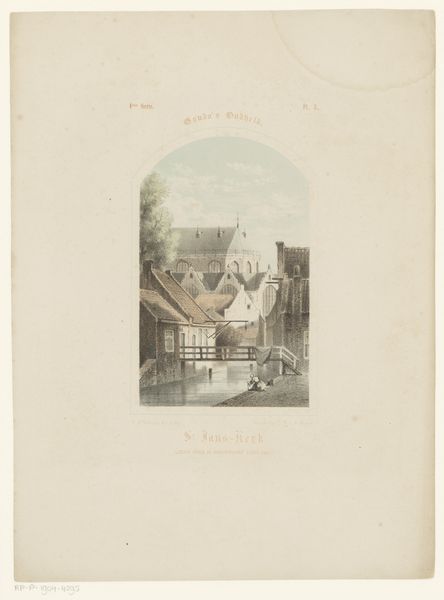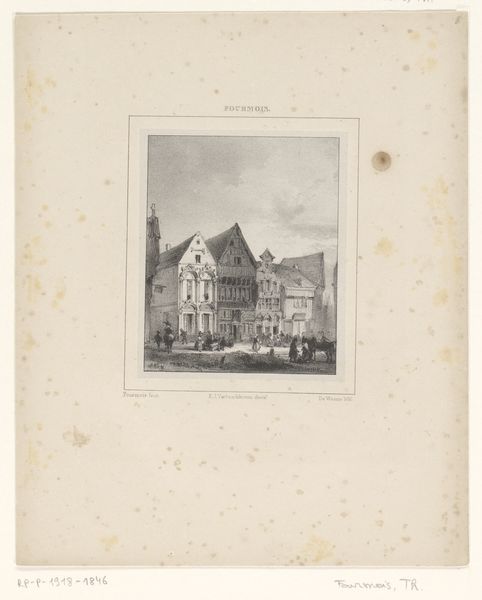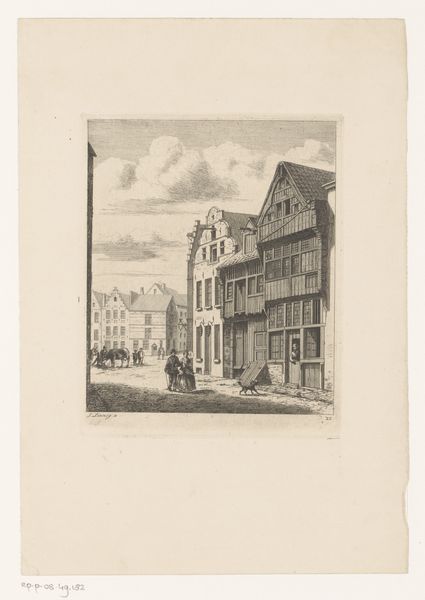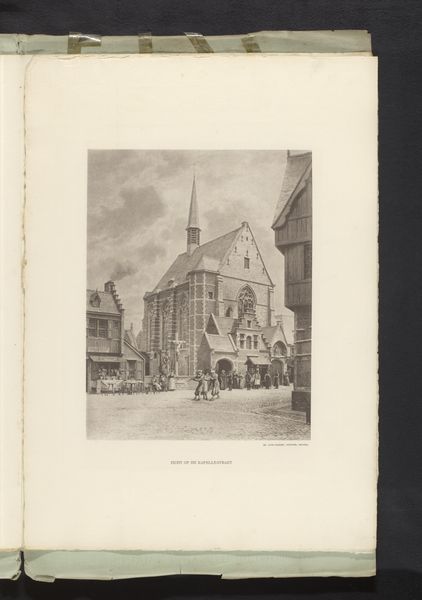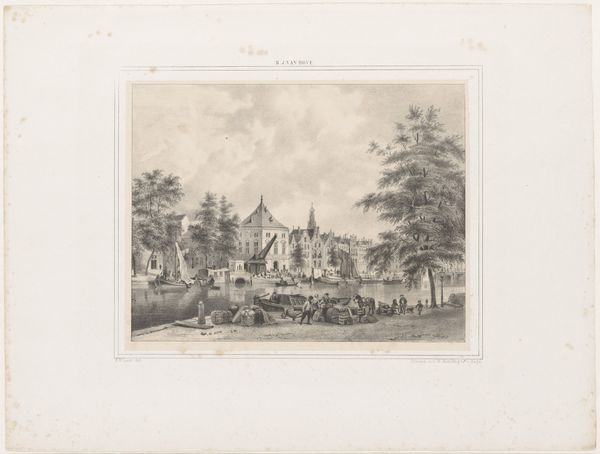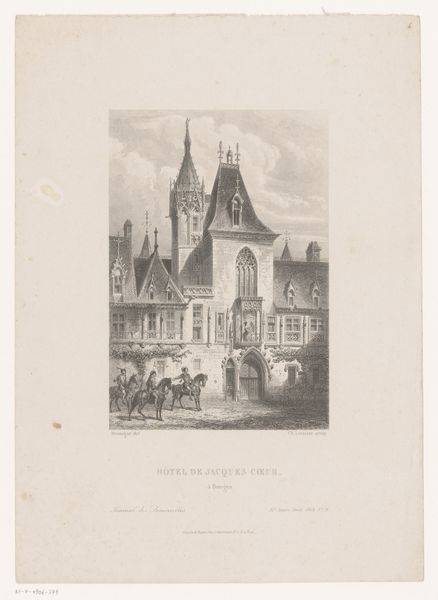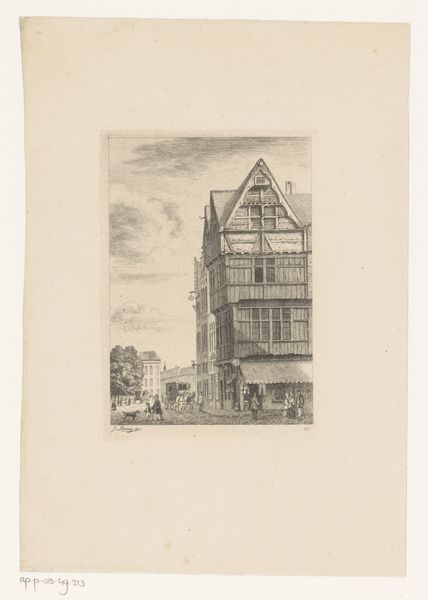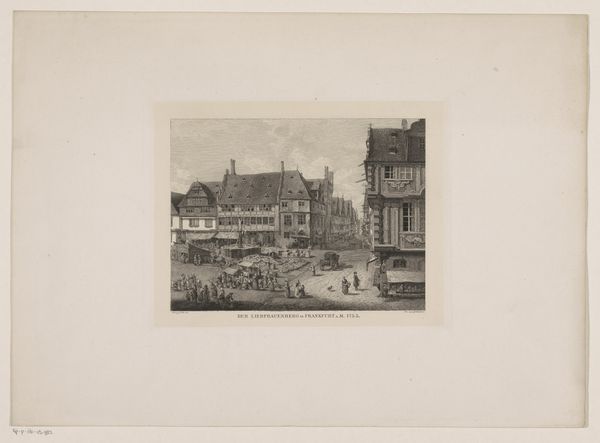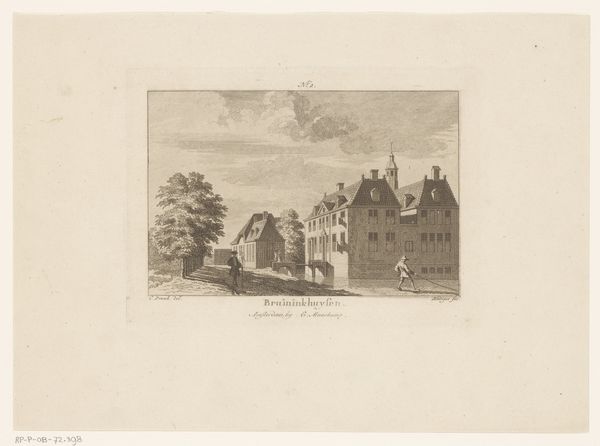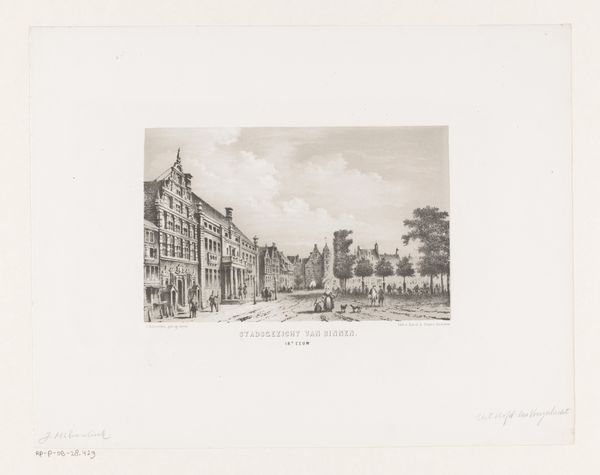
print, etching
#
medieval
# print
#
etching
#
cityscape
#
genre-painting
Dimensions: height 390 mm, width 300 mm
Copyright: Rijks Museum: Open Domain
Curator: What I find particularly charming about "A Street in the Fifteenth Century," created between 1857 and 1864, is its delicate execution in etching. The unknown artist perfectly captures the essence of daily life, with its detailed depiction of the architectural features of the time. What catches your eye first? Editor: Instantly, a dreamlike quality strikes me—almost like stepping into a slightly faded, sepia-toned memory. There’s a quietness despite the figures populating the street. I get a strong sense of place, even if I don't immediately recognise exactly where, the etching brings it to life. Curator: The artist's anonymity is also striking. We are not sure who etched the street, so to speak. Nevertheless, there’s a clarity in their attempt to visualise a particular moment in time. How do you see the effect of this era playing out in the context of 19th-century printmaking and historical revisionism? Editor: Good point. The deliberate medievalism fits squarely into the 19th century’s preoccupation with romanticised versions of the past. This isn’t so much a portrait of the 15th century as an imaginative construction filtered through a 19th-century lens. Do you see any evidence of how that might manifest in this etching, though? Curator: In the careful depiction of the people for starters. They are deliberately positioned and meticulously portrayed. It could evoke a slightly embellished theatre stage set. Even the light feels staged, more evocative than realistic. Perhaps that hints at the selective nostalgia influencing the work. Editor: That really rings true. It’s fascinating to see how an artist engages with history—not as an objective recorder, but as an active interpreter, really constructing a past that speaks to contemporary concerns and desires. What can one take away from such an attempt? Curator: Ultimately, this work stands as an absorbing instance of how artists re-engage with history. It's not simply about replicating the past but reinterpreting it through the prism of the present. Editor: And I love that it reminds us that every portrayal, no matter how detailed, is still a storytelling endeavor, steeped in subjectivity. That’s how art remains vital.
Comments
No comments
Be the first to comment and join the conversation on the ultimate creative platform.
